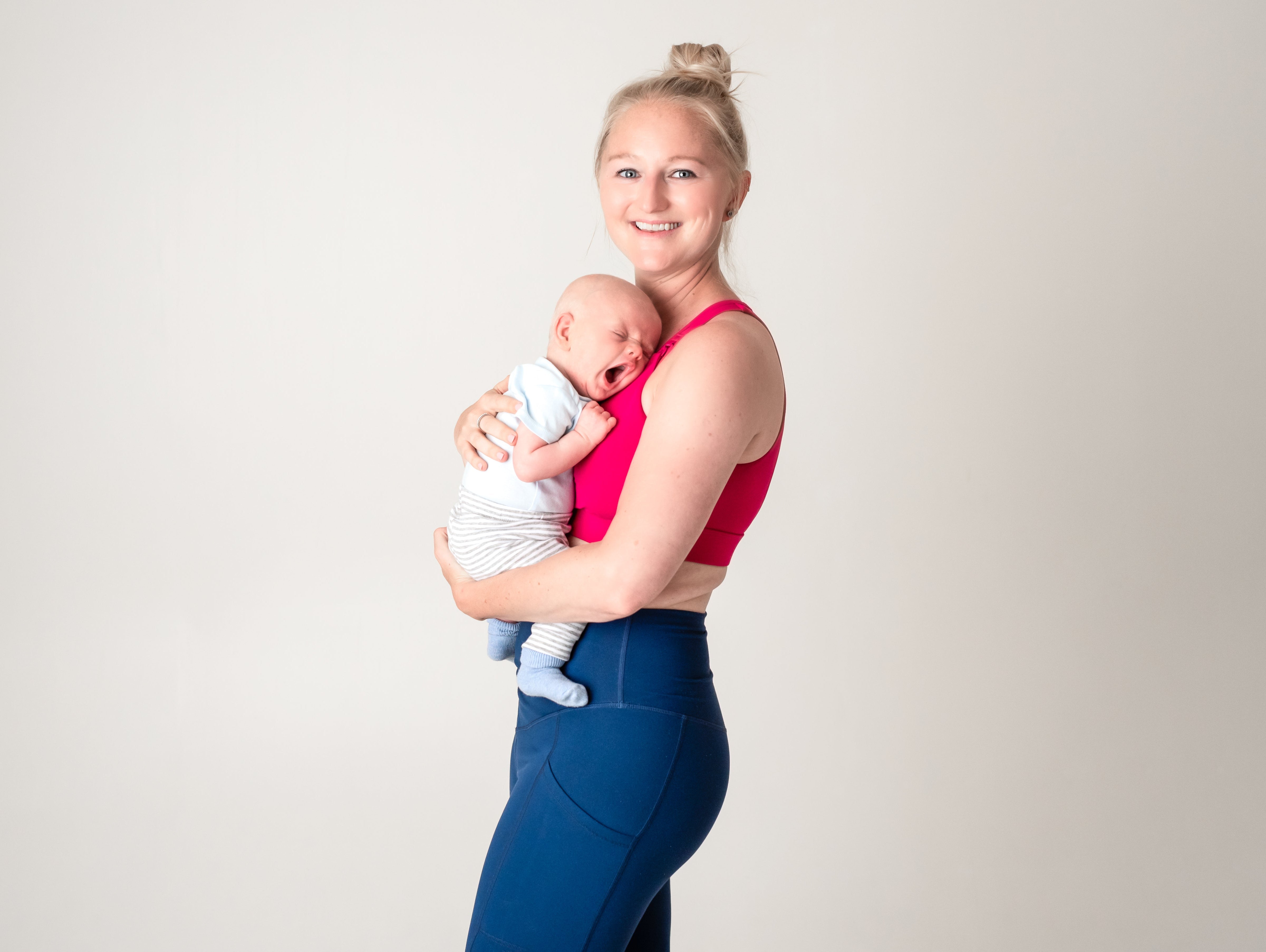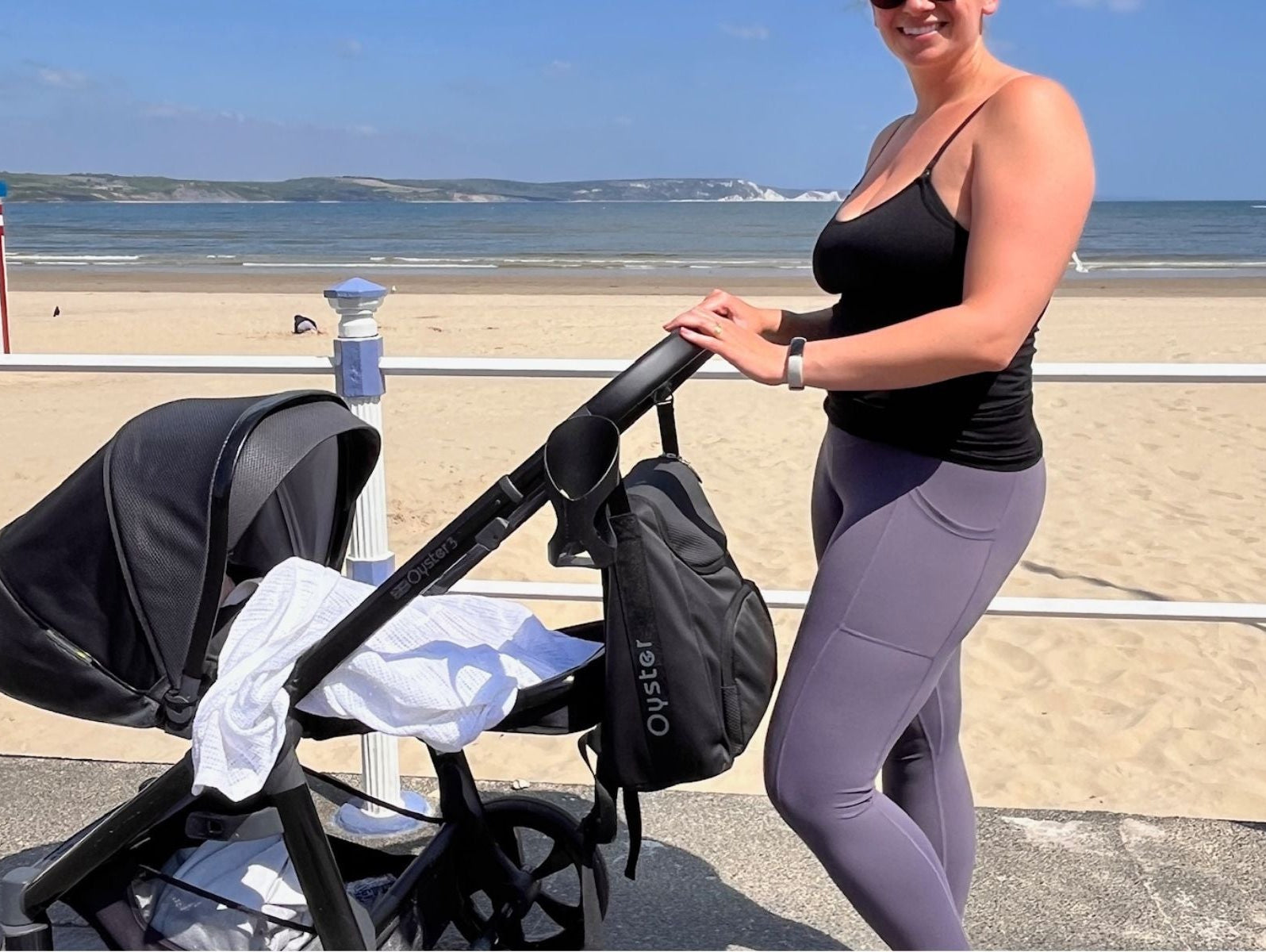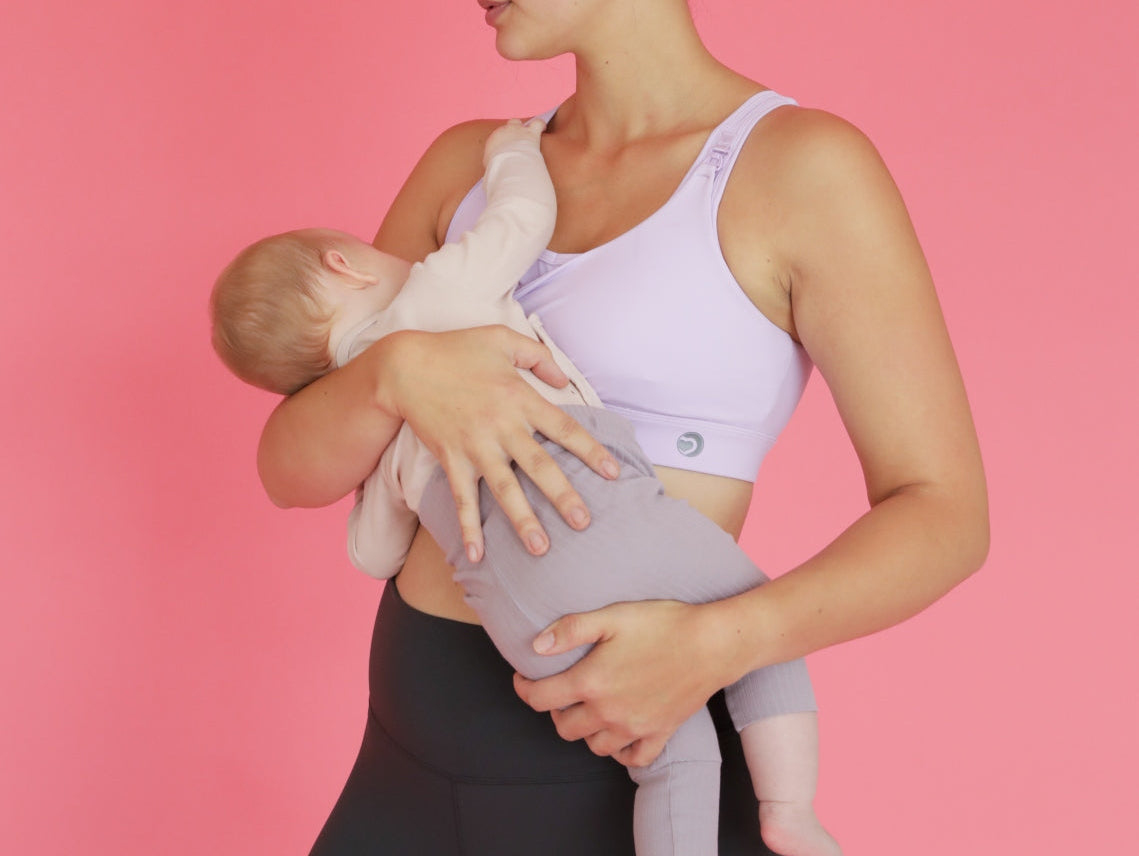Breastfeeding provides your baby with all the nutrition they need, while exercising offers new mothers both physical and mental benefits. But can breastfeeding and exercise go hand in hand, and what impact does it have on you, your milk or your baby?
In 2019 an image of ultra-marathon runner Sophie Power breastfeeding her baby at an aid station of the 106-mile Ultra-Trail du Mont Blanc (UTMB) went viral.
The picture triggered a global debate about motherhood – should women exercise and breastfeed? And how soon is too soon to exercise after giving birth?
The caption she shared on Instagram read: “A few days ago I had a call from Strava asking to share this picture and for the story behind it. But this isn’t a story about me. It’s a story about the daily struggle of being a new Mum. A story about the need to nurture our babies the best we can. And the importance to prioritise our physical and mental health – to be ourselves as well as be a mother. I have been overwhelmed by the positivity and supportive messages. They are for all mothers for we are all in this together.”
Against the backlash, Power showed how incredibly strong women can be after childbirth and how, actually, we should be able to get back to fitness and be able to continue breastfeeding and exercise without toxic debate.
Cordelia Uys, a breastfeeding counsellor at Blossom Antenatal, says there’s no evidence that shows exercise is bad for breast milk or breastfeeding in general.
“It’s worth remembering that throughout human history, breastfeeding mothers will have needed to do vigorous physical work in order to sustain themselves and their families, so it wouldn’t make sense from an evolutionary point of view if breastfeeding mothers couldn’t safely exercise.”
So, does exercise affect breast milk?
A 2020 randomised clinical trial, from the Department of Pediatrics and Dana Dwek Children's Hospital, in Tel Aviv, showed that physical activity does not affect human milk volume or its macronutrient contents.
However, some studies indicate that strenuous exercise can lead to an increase in lactic acid levels in human milk, and some mothers report their baby is fussy on the breast for a while after they’ve exercised, explains Uys. “It’s also possible that a baby might be put off by the salt in their mother's sweat, in which case she might want to rinse her breasts or shower before breastfeeding. On the other hand, many women find their baby is perfectly happy to breastfeed while she’s still sweaty.”
What are the benefits of breastfeeding and exercise?
The benefits of exercise have been widely documented: It raises fitness, reduces disease risks, lengthens life spans, improves heart health and makes us both physically and mentally stronger.
The benefits of exercise postpartum are just the same as the benefits at any other time of life. Post-birth, exercise can help strengthen abdominal muscles, which are weakened by pregnancy and birth, and also help to treat postnatal depression.
Breastfeeding also has many benefits to both mum and baby. “Apart from the fact that breast milk is tailor-made for your baby, free, and always available, it also offers protection from infection, vitamins and nutrition, reduces the risk of sudden infant death syndrome and childhood leukaemia,” says Uys. “And breastfed babies are less likely to develop diabetes, or become overweight when they are older.”
Always check with your doctor before you begin exercising after birth. The NHS recommends you wait after your 6-week postnatal check before you resume any exercise regime whereas recent studies have indicated that it is advisable to wait as much as 12-weeks before resuming high impact exercise such as running.
What are the best times to breastfeed if you are exercising?
A mother should feed or pump before exercise if she is worried about the effects of exercise on her milk supply, advises Uys.
“In order to protect their milk supply and avoid blocked ducts, exercising mothers need to continue to breastfeed (or pump) as regularly as they usually would,” she says.
“Breastfeeding shortly before exercising is a good idea both to prevent a long gap between feeds, and so that the mother doesn't feel uncomfortably ‘full' during her work-out.”
Should I be eating more if I’m breastfeeding and exercising?
Lots of women report feeling ravenous when breastfeeding, so you might not need a reminder to eat, but if you’re exercising too – you’ll need to make sure you’re eating enough to keep your energy up.
After all, “breastfeeding burns off calories,” reminds Uys. “If you are exclusively breastfeeding, you’ll burn off about 300 calories a day.”
What about buying a sports bra for breastfeeding?
Most women’s breasts change a lot during and after pregnancy – and it’s very common to go up a cup size or two. So it’s important you find a sports bra that fits but also includes easy-open cups for nursing but is also adaptable to your changing shape such as this maternity bras.
Any final tips?
The feel-good hormone oxytocin is released when breastfeeding, which encourages bonding between mum and baby and reduces stress, but it takes energy to produce milk – which means breastfeeding can make you feel overly tired. Go easy on yourself and if you need to, take a power nap in between feeding and heading out for a run. Remember exercising is a mood booster and not meant to be an extra source of stress.
For more information on breastfeeding and exercise do check out the following resources:
Photo credit : Alexis Berg




